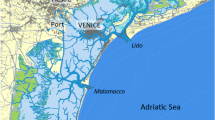Abstract
Flood is one of the common natural phenomena anywhere. In the second half of 2011, Thailand has recently faced with the most devastating flood of her modern history. More than 3,330 national highways are damaged by this flood. Some roads are heavily destroyed while others are partially damaged and emergency relieves cannot access to the flooded areas. Food and medicine distribution in the central part of the country has by large been disrupted. As a consequence, highway restoration is an urgent responsibility of road authorities. This study presents the sequential highway network restoration decision model when budgets and resources are unknown. Highways are restored one by one in sequence. To determine an optimal restoration sequence, the model is formulated as a dynamic program where the primary objective is to sequentially restore roadways to minimize the travel demand loss for the disconnected network. Once the network is connected, the secondary objective is to sequentially restore roadways to minimize the network travel time where traffic assignment onto the network is based on user equilibrium concept. The heuristic solution method using particle swarm optimization technique is provided for practical size problems. A sample network is examined to investigate the solution characteristics. It is found that the proposed algorithm can provide good practical solutions to the sequential highway network recovery problems and is incorporated to the Thailand highway maintenance management system.





Similar content being viewed by others
References
Bean JC (1994) Genetic algorithms and random keys for sequencing and optimization. ORSA J Comput 6(2):154–160
Bell MGH, Schmocker JD (2002) Public transport network reliability: topological effects. In: The 3rd international conference on transportation and traffic studies, Guilin, China
Chang Y, Wilkinson S, Brunsdon D, Seville E, Potangaroa R (2011) An integrated approach: managing resources for post-disaster reconstruction. J Disasters 24(4):739–765
D’Este GM, Taylor MAP (2003) Network vulnerability: an approach to reliability analysis at the level of national strategic transport networks in the network reliability of transport. Elsevier, United Kingdom
Dreyfuse SE, Law AM (1977) The art and theory of dynamic programming. Academic Press, Inc, London
Du ZP, Nicholson AJ (1997) Degradable transportation systems: sensitivity and reliability analysis. Transp Res Part B 31(3):225–237
Held M, Karp RM (1962) A dynamic programming approach to sequencing problems. J Soc Ind Appl Math 10(1):196–210
Kennedy J (2006) Swarm intelligence. In: Zomaya AY (ed) Handbook of nature-inspired and innovative computing: integrating classical models with emerging technologies. Springer Science and Business Media, Inc, Berlin
Kennedy J, Eberhart R (1995) Particle swarm optimization. In: Proceedings of IEEE international conference on neural networks IV, pp 1942–1948
Larson RC, Odoni AR (1981) Urban operations research. Prentice-Hall, Englewood Cliffs
Morcous G, Lounis Z (2005) Maintenance optimization of infrastructure networks using genetic algorithms. Autom Constr 14:129–142
Nicholson AJ, Du ZP (1994) Improving network reliability: a framework. In: Proceedings of the 17th Australian Road Research Board conference, vol 17, no 6, pp 1–17
Nicholson AJ, Du ZP (1997) Degradable transportation systems: an integrated equilibrium model. Transp Res Part B 31(3):209–223
Sheffi Y (1985) Urban transportation networks: equilibrium analysis with mathematical programming methods. Prentice-Hall, New Jersey
Sinha KC, Labi S (2007) Transportation decision making: principle of project evaluation and programming. Wiley, New Jersey
Wakabayashi H, Iida Y (1992) Upper and lower bounds of terminal reliability of road networks: an efficient method with Boolean algebra. J Nat Disaster Sci 14:29–44
Yee A, Leung SK, Wesemann L (1996) The 1994 Northridge earthquake: a transportation impact overview. Transp Res Circ 462:7–19
Acknowledgments
The author would like to dedicate this research to his father who passed away at the time of this flood disaster.
Author information
Authors and Affiliations
Corresponding author
Appendix
Rights and permissions
About this article
Cite this article
Lertworawanich, P. Highway network restoration after the great flood in Thailand. Nat Hazards 64, 873–886 (2012). https://doi.org/10.1007/s11069-012-0278-2
Received:
Accepted:
Published:
Issue Date:
DOI: https://doi.org/10.1007/s11069-012-0278-2




